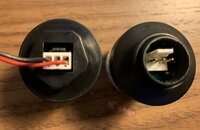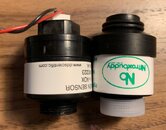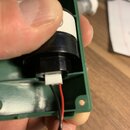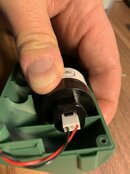DiveNav has now closed for business which leaves owners of their products looking for replacement sensors and batteries along with calibration gas for the CO testing products. The original CO sensor is made by DD Scientific in Great Britain. The sensors are reasonably priced but shipping directly form the UK is quite pricey. The O2 sensor is available widely but generally costs around 80 USD. A US distributor has recently opened up shop and can supply these sensors at a very reasonable price.
The sensors you will need are
CO sensor is part number S+4 2ECOH (it is the exact part found in the COOTWO)25usd
O2 sensor is part number S+AOX (it is an equivalent substitute for the part found in the COOTWO)30usd
shipping is 12.95usd
Both sensors including shipping will run you 67.95usd
These prices are valid if you are willing to wait to add it to another order that they have coming from UK. They order about every week. With demand they will begin to stock the part. If you ask them to order one immediately the CO sensor will be 60usd.
The contact information for this supplier is:
Tiffany Beach
McNeill International Inc.
410 Peachtree Parkway
Building 400, Suite 4245
Cumming, GA 30041
Direct Phone Number: 404-642-8433
Office Phone: 770-664-7278
Fax: 877-577-8805
e-mail: tiffany@gasdetectionsolutions.com
Website: www.gasdetectionsolutions.com
Calibration Gas and Calibration Gas Mixtures | McNeil InternationalCalibration gas, calibration gas mixtures, gas detection solutions, fixed systems and portable gas detectors and monitors. Call us at 1-800-626-3455 now.gasdetectionsolutions.com
Tiffany is delightful and very helpful. They have a wide array of gas testing supplies.
If you need to calibrate a CO sensor you will also need bump gas. I got mine from Grainger to avoid shipping charges. They have 17l and larger bottles. This is the link for 34L https://m.grainger.com/mobile/product/GASCO-Carbon-Monoxide-24VN14
You will also need a regulator valve and a method for metering it into the device during calibration.
I will sticky this thread for future reference and will allow additional posts that have additional information on service and supplies for our orphaned products. I will come in later and clean up any posts that are just attaboys. Hopefully we can keep this page clean but further discussion can continue in the original thread from which this one was born. It can be found here.
https://www.scubaboard.com/community/threads/divenav-has-closed.590245/
The sensors you will need are
CO sensor is part number S+4 2ECOH (it is the exact part found in the COOTWO)25usd
O2 sensor is part number S+AOX (it is an equivalent substitute for the part found in the COOTWO)30usd
shipping is 12.95usd
Both sensors including shipping will run you 67.95usd
These prices are valid if you are willing to wait to add it to another order that they have coming from UK. They order about every week. With demand they will begin to stock the part. If you ask them to order one immediately the CO sensor will be 60usd.
The contact information for this supplier is:
Tiffany Beach
McNeill International Inc.
410 Peachtree Parkway
Building 400, Suite 4245
Cumming, GA 30041
Direct Phone Number: 404-642-8433
Office Phone: 770-664-7278
Fax: 877-577-8805
e-mail: tiffany@gasdetectionsolutions.com
Website: www.gasdetectionsolutions.com
Calibration Gas and Calibration Gas Mixtures | McNeil InternationalCalibration gas, calibration gas mixtures, gas detection solutions, fixed systems and portable gas detectors and monitors. Call us at 1-800-626-3455 now.gasdetectionsolutions.com
Tiffany is delightful and very helpful. They have a wide array of gas testing supplies.
If you need to calibrate a CO sensor you will also need bump gas. I got mine from Grainger to avoid shipping charges. They have 17l and larger bottles. This is the link for 34L https://m.grainger.com/mobile/product/GASCO-Carbon-Monoxide-24VN14
You will also need a regulator valve and a method for metering it into the device during calibration.
I will sticky this thread for future reference and will allow additional posts that have additional information on service and supplies for our orphaned products. I will come in later and clean up any posts that are just attaboys. Hopefully we can keep this page clean but further discussion can continue in the original thread from which this one was born. It can be found here.
https://www.scubaboard.com/community/threads/divenav-has-closed.590245/








